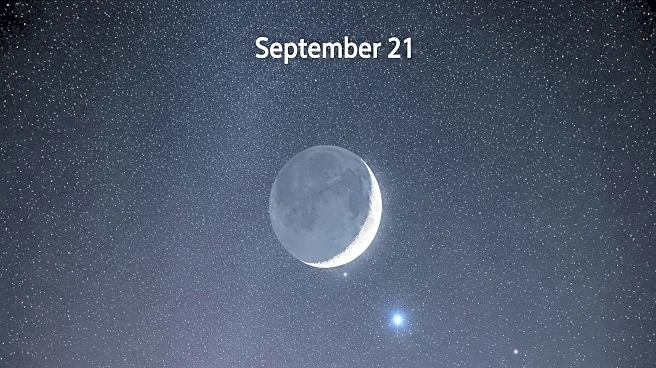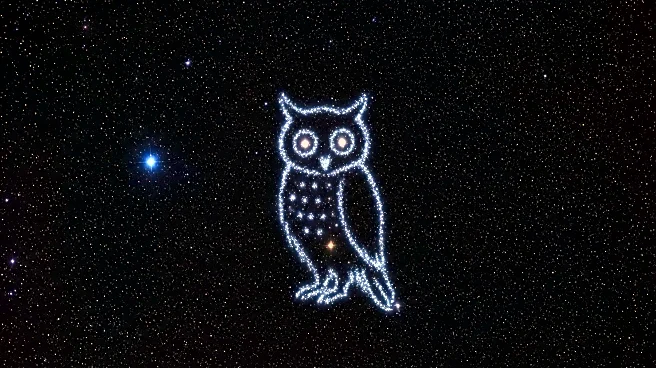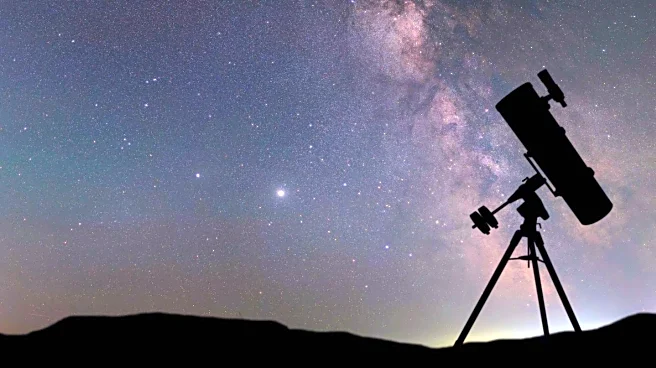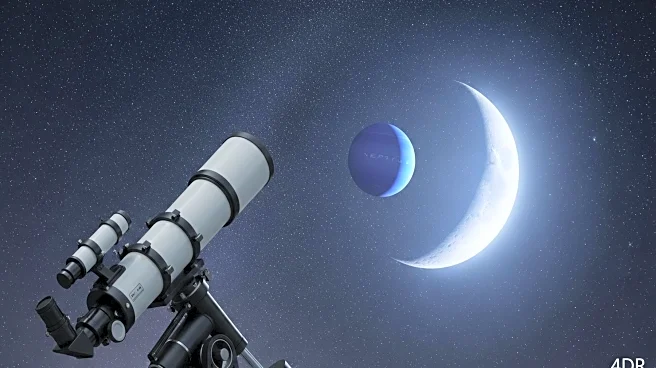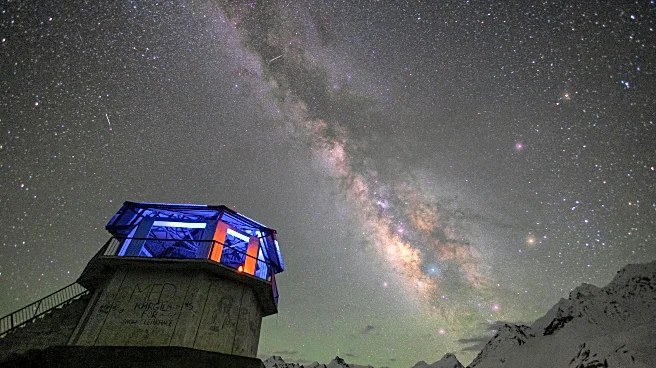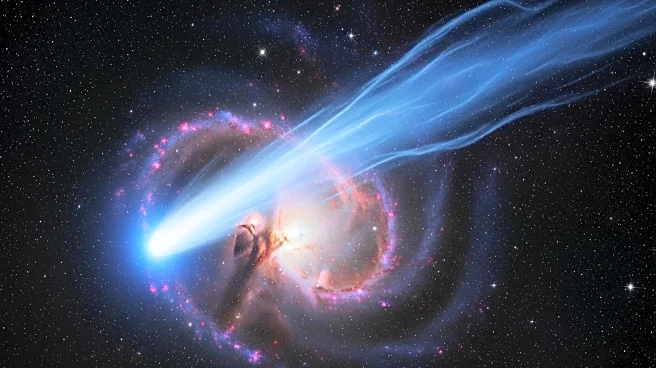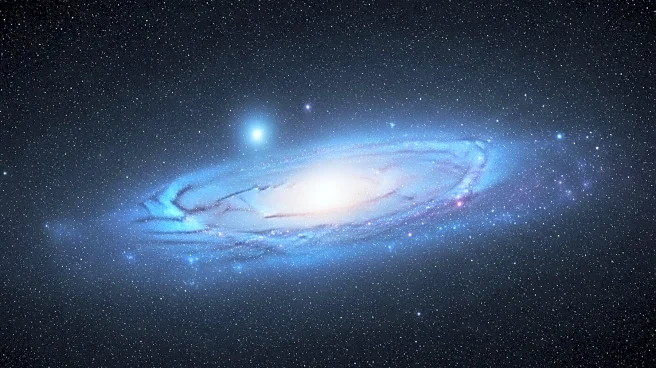What's Happening?
The gegenschein is a faint brightening of the night sky, observable in the region directly opposite the Sun. This phenomenon is caused by interplanetary dust reflecting sunlight. Historically, sightings of the gegenschein have been attributed to figures such as Alexander von Humboldt, Theodor Brorsen, and Edward Emerson Barnard. Observing the gegenschein requires specific conditions: a dark sky with a limiting magnitude of 6 or better, moonless nights, and the antisolar point at least 25° above the horizon, ideally near local midnight. The Milky Way's brightness and bright planets at opposition can hinder observation. The phenomenon is best viewed when the antisolar point is clear of the Milky Way and bright planets, eliminating certain months like June, July, December, and January.
Why It's Important?
The gegenschein offers astronomers and sky watchers a unique opportunity to observe a rare celestial phenomenon that provides insights into the distribution of interplanetary dust. Understanding such phenomena can contribute to broader astronomical studies, including the mapping of dust and debris in our solar system. Observing the gegenschein can also enhance public interest in astronomy, encouraging amateur astronomers to explore the night sky and engage with scientific communities. The phenomenon's rarity and the conditions required for its observation make it a challenging yet rewarding pursuit for those interested in celestial events.
What's Next?
Astronomers and enthusiasts may plan observations during optimal months when the gegenschein is visible, avoiding periods when the Milky Way or bright planets obscure the view. Continued documentation and study of the gegenschein can lead to a better understanding of interplanetary dust and its effects on sunlight reflection. As technology advances, new methods of observation may emerge, allowing for more detailed analysis and potentially uncovering new aspects of this phenomenon.
Beyond the Headlines
The gegenschein's historical misinterpretations as clouds or comets highlight the evolving understanding of celestial phenomena. Its study underscores the importance of accurate observation and documentation in astronomy. The phenomenon also reflects the interconnectedness of celestial bodies and the impact of interplanetary dust on our perception of the night sky. As interest in astronomy grows, phenomena like the gegenschein can inspire future generations to explore and appreciate the complexities of the universe.

